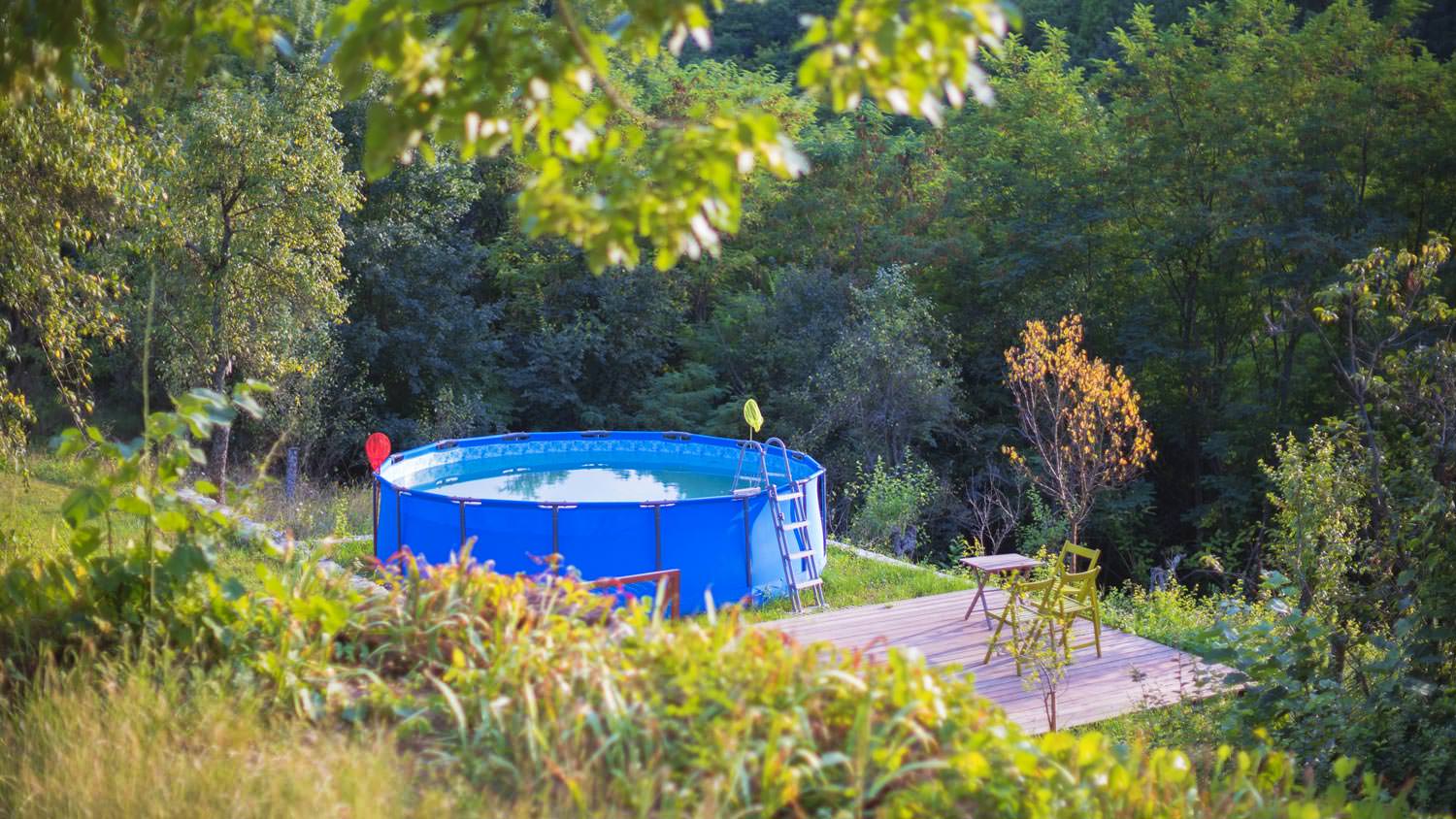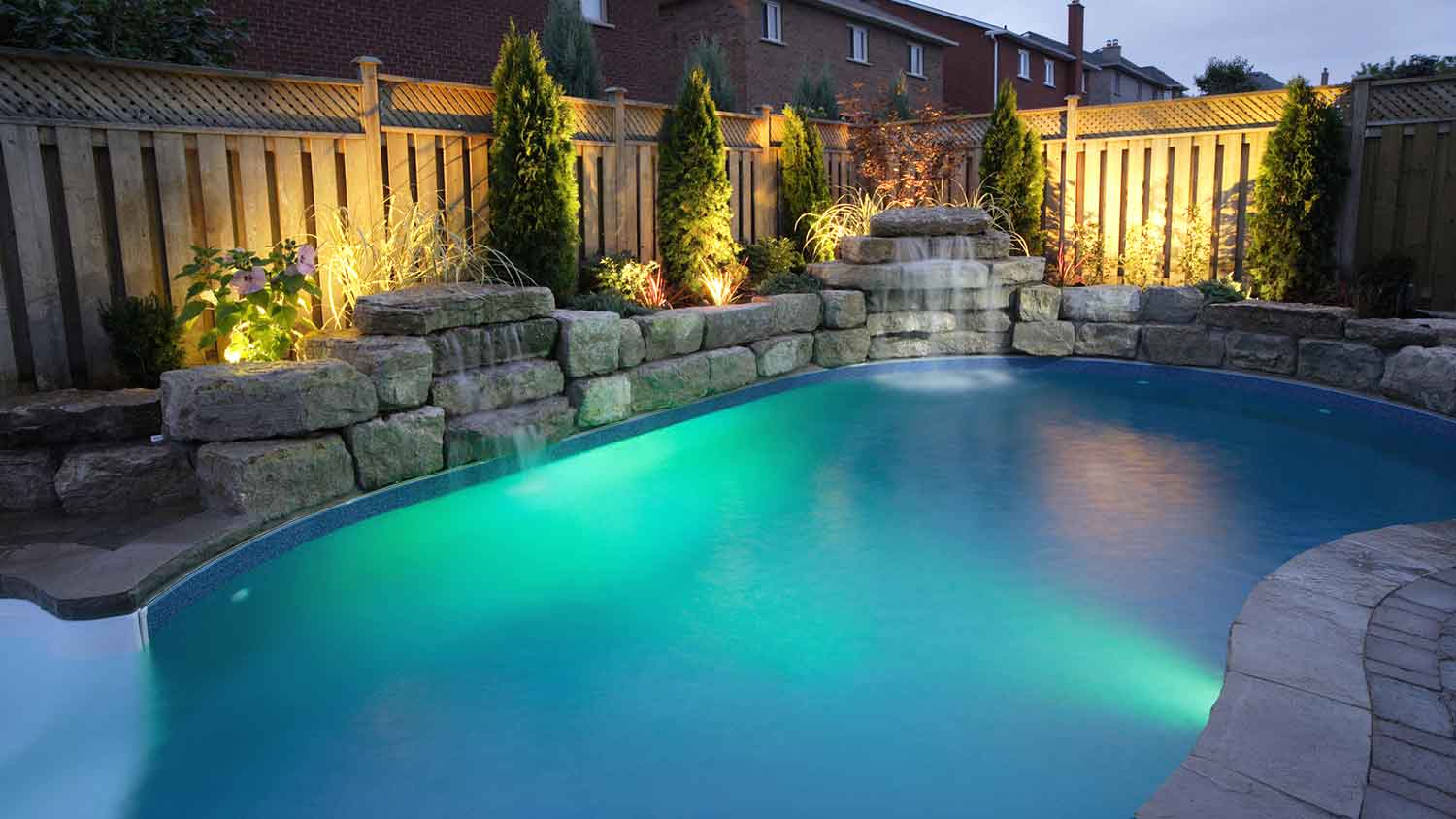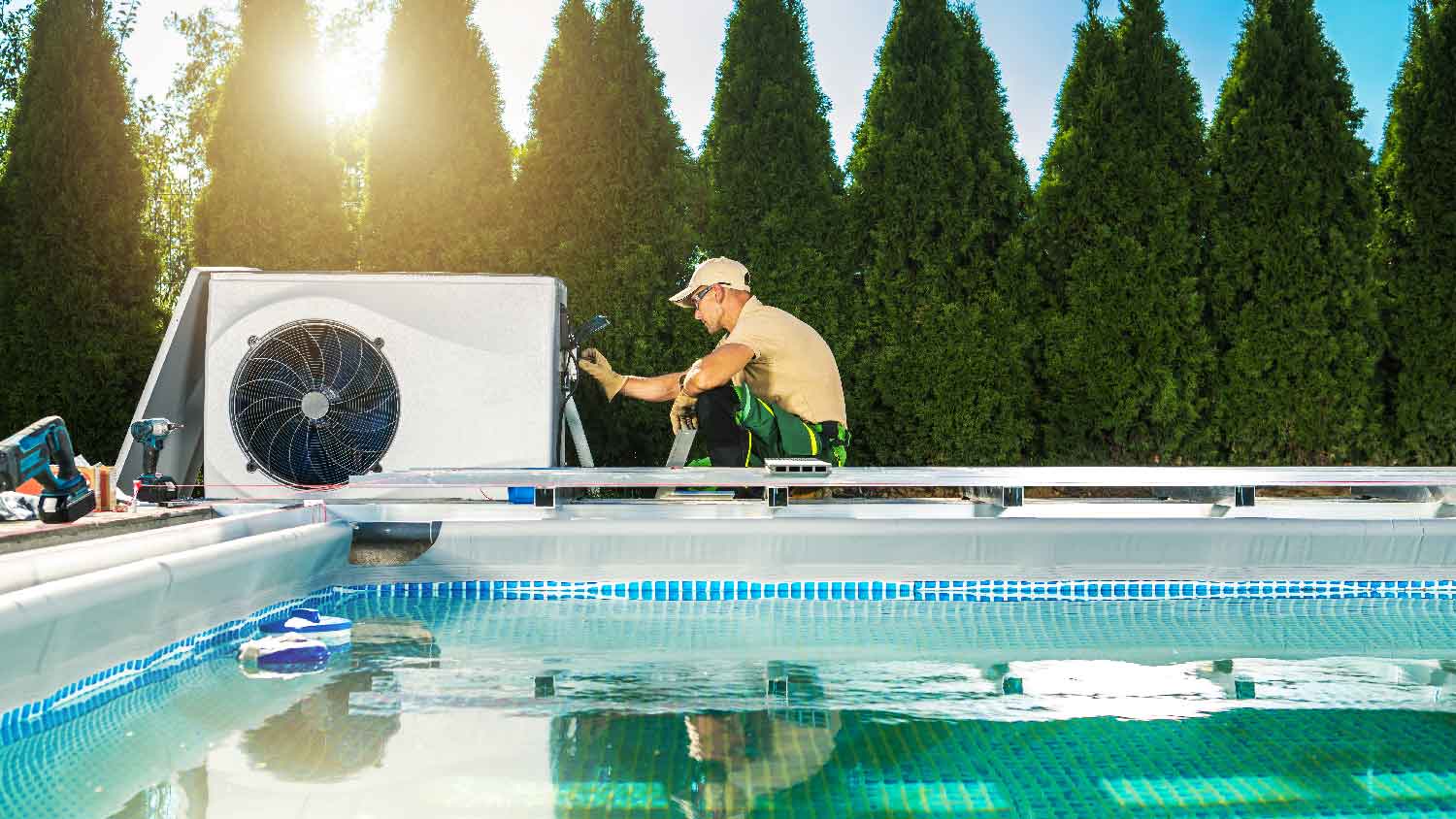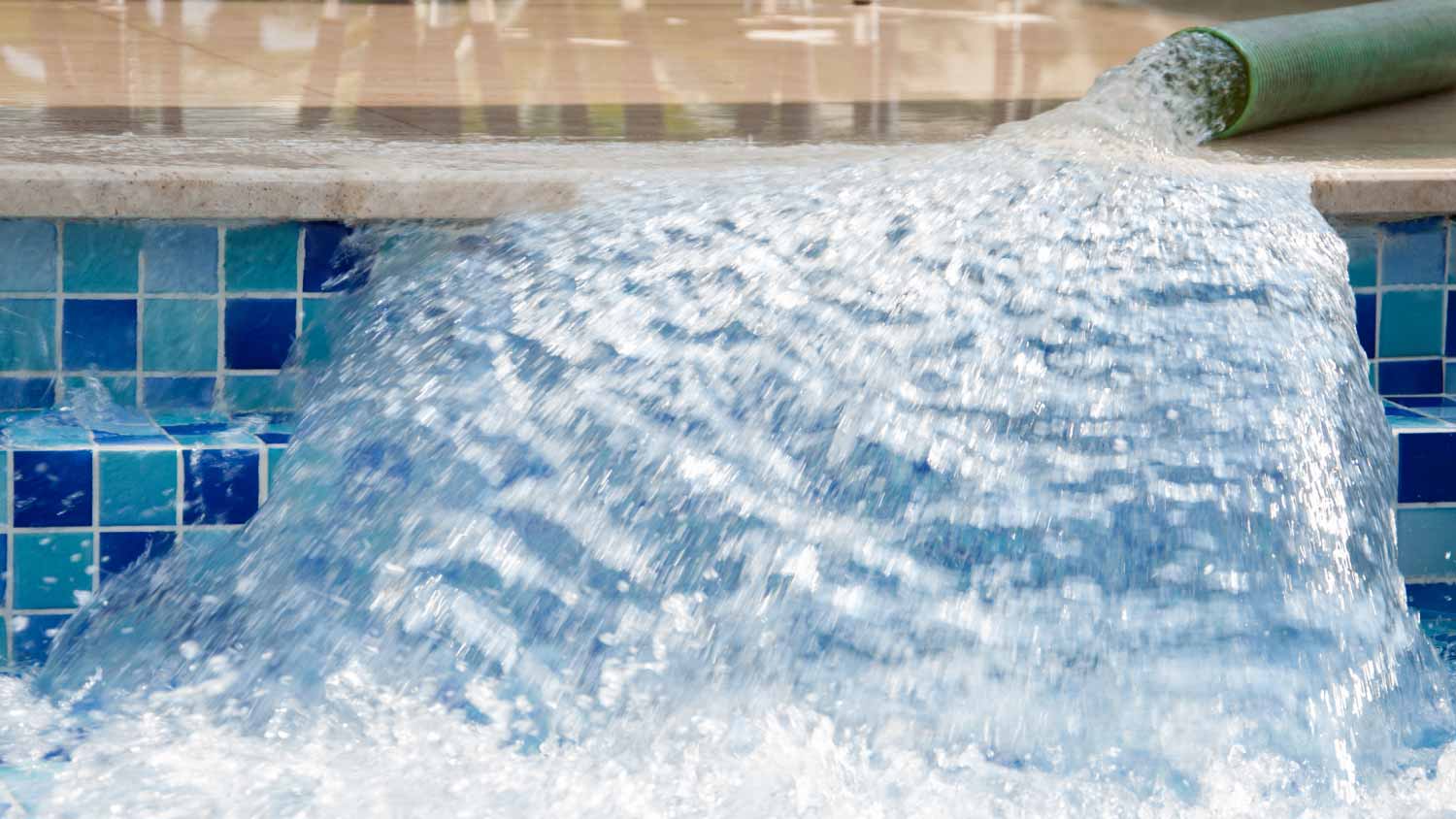
Who installs above ground pools? Learn when to hire a pool installer vs. landscaper, what to expect, and the typical cost range.
An in-ground pool can cost anywhere from $14,000 to $135,000 to install, but most people pay around $65,909. You may need a variety of professionals to install a pool, so call a pool pro for more guidance.


Installing an in-ground pool ranges from $14,000 on the low end to $135,000 or more, covering different materials and installation requirements.
Factor in location, material, and ongoing maintenance—each can shift your final price more and deserves a line item in your budget.
A well-designed pool boosts curb appeal, can increase resale value, and gives your family a built-in spot for seasonal fun.
This article was created using automation technology and thoroughly fact-checked and edited by HomeAdvisor Editor Ryan Noonan.
Installing an in-ground pool costs between $44,499 and $87,349, with most homeowners landing near the $65,909 mark. Because the job involves excavation, plumbing, and electrical work, expect to bring in a team of specialists. A small installation can cost as low as $14,000, while large-scale installations can cost as much as $135,000. A licensed pool contractor can coordinate the crew and keep your timeline—and budget—on track.
Your choice of pool material impacts not only the initial cost but also long-term maintenance expenses. The main types are vinyl, fiberglass, and concrete, each offering unique benefits and considerations for homeowners.
| Material | Average Price Range | Description |
|---|---|---|
| Vinyl | $40,000–$75,000 | Replace liner every 10 years |
| Fiberglass | $55,000–$100,000 | Lasts 25+ years |
| Concrete | $65,000–$120,000 | Lasts 50–100 years |
Versatile and customizable: Vinyl pools come in a variety of shapes and designs, allowing you to tailor your pool to your backyard and personal style.
Easy maintenance: Vinyl surfaces are smooth and nonabrasive, making cleaning a breeze. Many homeowners manage the upkeep themselves, saving on professional pool cleaning costs.
Less chemical use: Vinyl resists algae growth, so you'll use fewer chemicals, making it a more eco-friendly option.
Periodic liner replacement: Keep in mind that you’ll need to replace the liner every 10 years, which is an added cost to consider.
Quick installation: Fiberglass pools come as pre-formed shells that fit into a leveled hole, making the installation process faster and less complicated.
Smooth surface: The gel coating on fiberglass pools provides a smooth surface that's gentle on your feet and resists algae growth, reducing maintenance time and costs.
Long-lasting: With proper care, fiberglass pools can last over 25 years without the need for major repairs or resurfacing.
Size limitations: Typically, fiberglass shells are no more than 16 feet across, so if you're looking for a larger pool, this might be a consideration.
Unlimited design options: Concrete pools are highly customizable in shape and size, allowing you to create a truly unique backyard centerpiece.
Durability: Concrete pools are built to last. Many have a lifespan of 50 to 100 years with proper maintenance.
Ideal for large pools: If you're dreaming of a spacious pool or unique features like a deep end for diving, concrete is the way to go.
Higher maintenance: Concrete is porous and can harbor algae, so it requires more chemicals and regular cleaning. You'll also need to resurface the pool every 10 to 15 years.
Remember, if you're planning to dive in head-first, the Red Cross recommends a depth of at least 9 feet. Consider your yard size and how the pool will fit into your overall landscape to choose the perfect size for your home.
| Size in Feet | Average Price Range |
|---|---|
| 10x20 | $10,000–$25,000 |
| 12x24 | $25,200 |
| 14x28 | $34,000 |
| 15x30 | $39,400 |
| 16x32 | $44,800 |
| 18x36 | $56,700 |
| 20x40 | $70,000 |
Small pools: Tight on space? Plunge or cocktail pools start near $22,650 and still provide plenty of room to cool off.
Standard pools: A backyard pool is about 14-by-28 feet with a depth of around 6½ feet. Most homeowners budget between $90 to $250 per square foot for installation.
Large pools: If you have ample space and want to make a splash, larger pools up to 20-by-40 feet are an option. Keep in mind that the bigger and deeper the pool, the more it will cost—both to build and maintain.
Consider the following options for pool shapes and designs.
Imagine walking into your pool just like you would at the beach—that's the idea behind a zero-entry pool. With one or more sides gently sloping up to meet the land, there's no need for steps. It's not only stylish but also accessible for everyone. The cost is similar to a standard pool, but the unique design adds a special touch to your backyard.
If you've ever dreamed of having a tropical paradise right at home, a lagoon pool might be for you. With free-flowing, asymmetrical shapes, these pools create a natural, exotic feel. Add features like waterfalls or grottos, and you'll feel like you're on vacation every day. Lagoon pools can range from $50,000 to $150,000, depending on the design and add-on features.
Semi-in-ground pools offer a unique look by raising part of the pool above ground level. This design works well with sloped yards and allows for creative landscaping options. Prices range from $6,800 to $25,000, making it a less costly way to add visual interest to your outdoor space.
When designing your dream pool, consider these additional features and expenses.
Considering a saltwater system? For an additional $500 to $3,300, you can enjoy water that's gentler on your skin and eyes. Plus, you'll save on chemical costs in the long run.
Add ambiance and safety with pool lighting. For $200 per light, you can swim under the stars with beautiful illumination.
Extend your swimming season with a pool heater. Installation costs range from $300 to $5,700, letting you enjoy warm water even on cooler days.
Add a touch of luxury with a hot tub. A basic model adds $5,000 to $8,000 to your pool project, providing a perfect spot to relax and unwind.
Complete your outdoor oasis with landscaping. For $700 to $3,300, you can create a stunning backdrop that enhances your pool area.
Your pool deck is where memories are made. Whether you choose concrete, stone, or wood, expect to spend $3,000 to $12,000 to create a welcoming space.
Add the soothing sound of flowing water with a waterfall or fountain. These features range from $1,500 to $5,000, turning your pool into a tranquil retreat.
Bring fun to the next level with a water slide or diving board. Slides cost between $1,500 and $20,000, and diving boards range from $300 to $5,000, adding excitement for the whole family.
Fencing your pool area is essential and often required. If you have small kids or pets, you need to invest in fencing. Costs range from $1,500 to $10,000, providing peace of mind along with style.
Keeping your pool in top shape ensures years of enjoyment. Regular maintenance costs about $3,000 to $5,000 per year, covering upkeep, repairs, water, and electricity costs.
Routine cleaning: Skim the surface and run the vacuum each week to keep the water crystal clear.
Chemical balance: Regularly test and adjust chemicals to maintain a healthy swimming environment.
Seasonal care: Opening and closing your pool properly with a professional can prevent costly damage.
With consistent care and installation from a local pool professional, your pool will provide endless fun and relaxation for years to come.
No place is more important than your home, which is why HomeAdvisor connects homeowners with local pros to transform their houses into homes they love. To help homeowners prepare for their next project, HomeAdvisor provides readers with accurate cost data and follows strict editorial guidelines. We surveyed thousands of real customers about their project costs to develop the pricing data you see, so you can make the best decisions for you and your home. We pair this data with research from reputable sources, including the U.S. Bureau of Labor Statistics, academic journals, market studies, and interviews with industry experts—all to ensure our prices reflect real-world projects.
From average costs to expert advice, get all the answers you need to get your job done.

Who installs above ground pools? Learn when to hire a pool installer vs. landscaper, what to expect, and the typical cost range.

Not sure who to call to fix a pool light? Learn why a pool repair service is best, what electricians can do, and what replacement costs.

Need to know who to call to fix a pool heater? See why a pool electrician is best for safe, code‑compliant pool heater repair—find a pro today.

Wondering who to hire to remodel a pool? Learn when to call a pool remodeling company vs. a pool installer, plus the steps pros take to transform your pool.

Who can I call to fill my pool with water? Compare pool water delivery vs. other options, see costs, and learn how pros get it done.

Find who to hire to level the ground for a pool, compare installers vs. landscapers, review steps and costs, and plan with confidence.